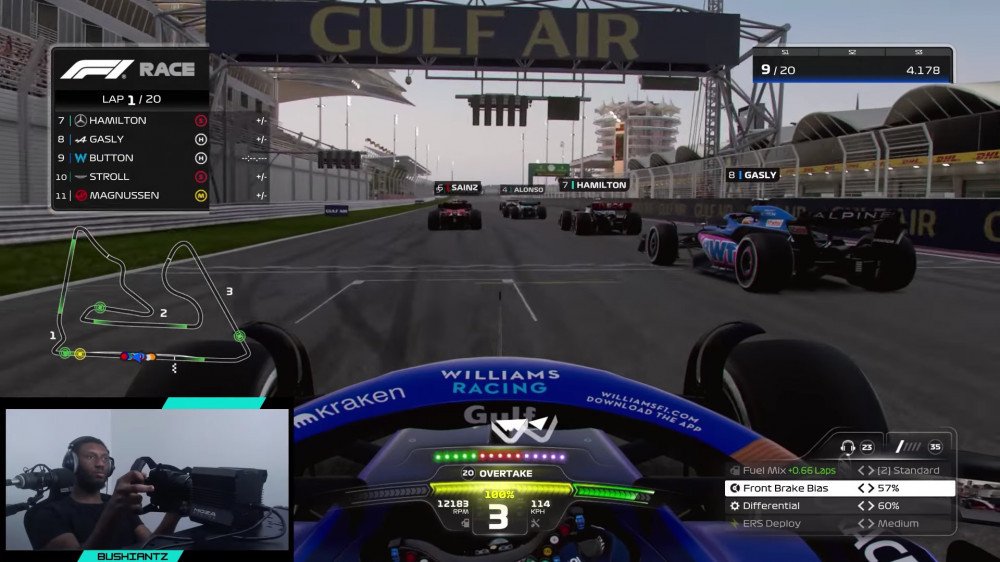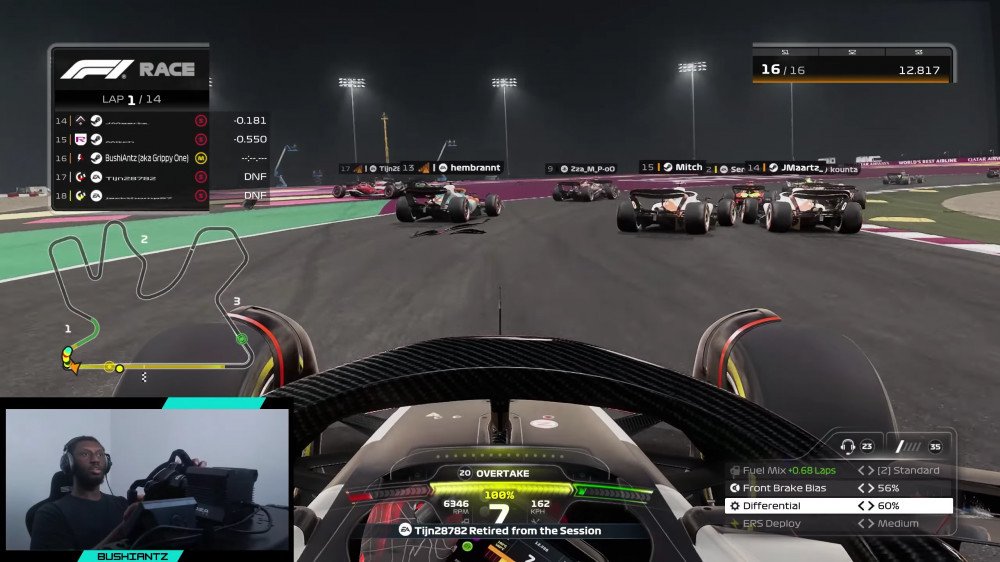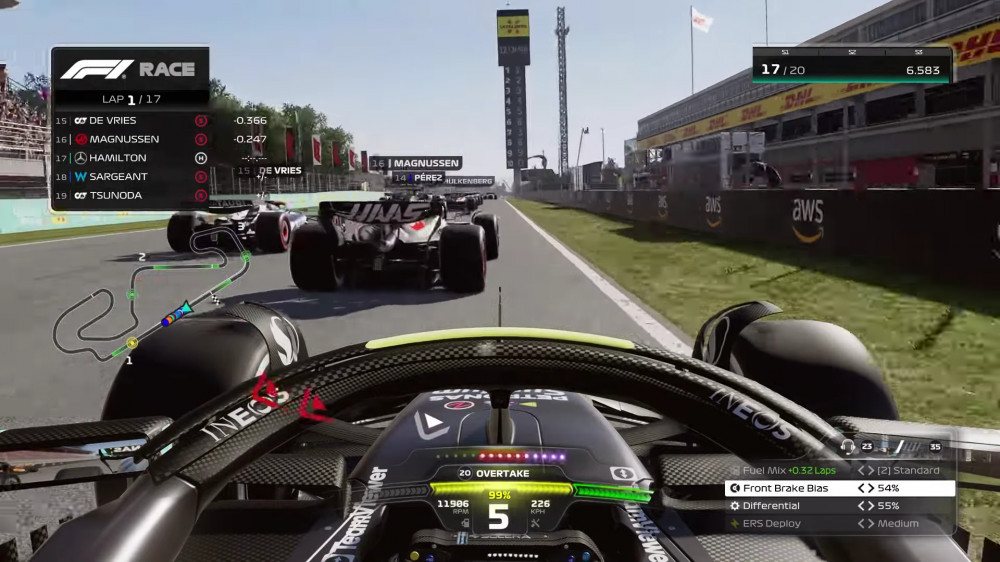F1 23’s handling model has been a giant leap forward compared to F1 22; however, getting the perfect start is just as important as ever.
That’s why I’m going to help you learn how to get the best start on F1 23 in just a few minutes so that you can even match 110 AI’s starts on softs while on hard tyres.
Why Starts Are SUPER Important!
If you’ve watched Formula 1 in the last few years, it might be obvious why the race start is one of (if not the most) important parts of a race.
Races have been won by getting a perfect start, yet you have the saying in motorsports: “A race can’t be won at turn one, but it can be lost.”
Why is that the case?
It’s because race starts and how you tackle turn 1 are two completely different things (especially if you’re not starting at the front of the pack).
Race starts become even more critical in the virtual world since online, you can have equal cars (meaning everyone has the same spec car, and it’s 100% down to the driver’s abilities).
Think F1 Esports quickly. Starting in P11 and gaining four positions at the start can be (and IS in often cases) the difference between finishing outside and finishing inside the points. That’s how crucial race starts are in the virtual racing world.
Now, I will go over the different phases of a race start in detail for you. If you’d like to watch a short (but informative video) on this topic instead, here’s a video I made going over race starts:
Formation Laps (and Why They Are Important)
Formation laps are where you prepare for the launch off the line. It gives you the chance to:
- Warm up the brakes
- Get your tyre temps in the best window
- Give you time to check what tyres everyone around you has on
- Position your car in the best spot to get an advantage into turn 1
That’s a lot you can learn and do to prepare for a race start on the formation lap. That is why it’s essential. Cold brakes into turn one will cause disaster unless you’re on pole, and even then, you’ll still lose many positions.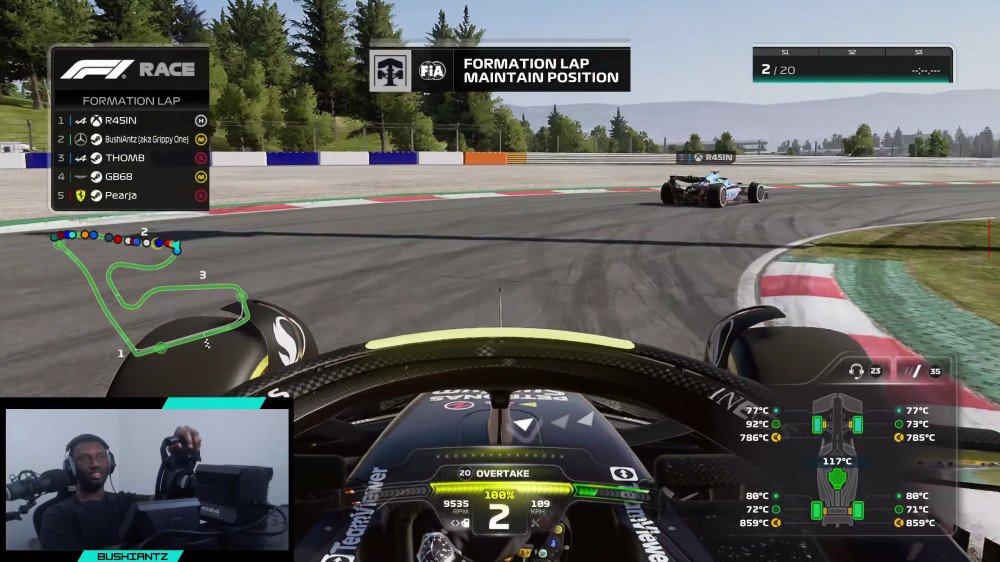
Cold tyres will not give you the grip needed to carry a lot of speed around turn 1, potentially losing you a crucial position or 2.
Understanding what tyres your rivals in front or behind you have on is essential for planning the first corner (but more importantly) the first couple of laps in the race. Being on the hard tyres and fighting a rival on softs during the open few laps will only lose you time (& potentially track position).
Finally, positioning your car in the best spot possible to attack or defend a position going into turn one can be the difference between winning and losing.
I have experienced races where I’ve had a bad start, lost a couple of positions and ended up in a collision going into turn one that I wouldn’t have been a part of had I kept my starting position.
Those incidents are the most frustrating because it was easily preventable by getting a better start.
Before we get into the start itself, let’s quickly go into your grid slot and see what you can do to set yourself up for an attack on defence going into the first corner.
How to Gain an Advantage in Your Grid Slot
In recent F1 titles, Codemasters has given us the ability to park the car on the starting grid ourselves after a formation lap.
This allows us to put the car in a position to attack or defend just like they do in real life.
So, if you find yourself on pole position looking to defend, make sure you have your car pointing toward the inside line for turn 1. If turn 1 is a left-hander, point your car towards the left slightly.
This will allow you to defend the inside line going into turn 1, protecting your position in most cases.
If you find yourself in P2 on the grid, you’ll want to, in most cases, keep your car in a straighter line. You already have the inside line going into the first corner, and your main concern with P2 is getting the best launch possible to attack the man on pole.
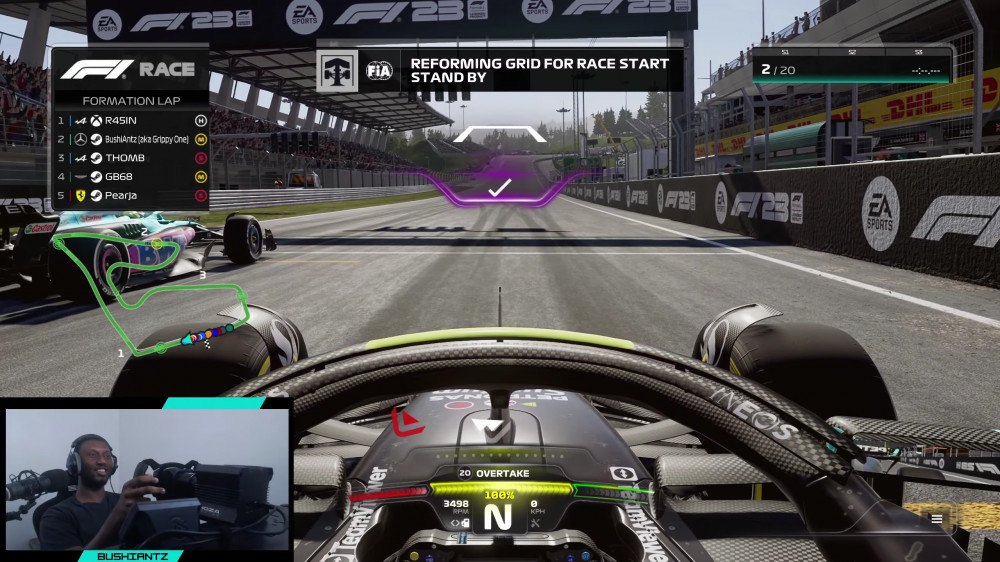
If you find yourself in P3, it depends on the track. For tracks with longer distances to turn 1 (think Spain or Mexico), it’s best to follow the man-on-pole position. This is because you will get a massive slipstream down to turn one and potentially overtake him before you get there.
However, for tracks with shorter distances, you’ll want to point your car in the opposite direction to P1.
If you get a better start than P1 or find that P1 and P2 are scrapping heading into turn 1, getting blocked by the man ahead because you pointed your car in the same direction doesn’t benefit you. So it’s best to go the opposite direction just in case you can pounce on a position or two.
If you’re P4 or lower, focus on not getting into a collision heading down to turn 1. People go for risks, make mistakes or have the wrong temps in their tyres/brakes, so focus on being clean, and you might pick up more positions than you think.
THE START (Controlling The Launch of The Line)
This is the most crucial part of the entire sequence. However, there isn’t much that goes into the start. Make sure that your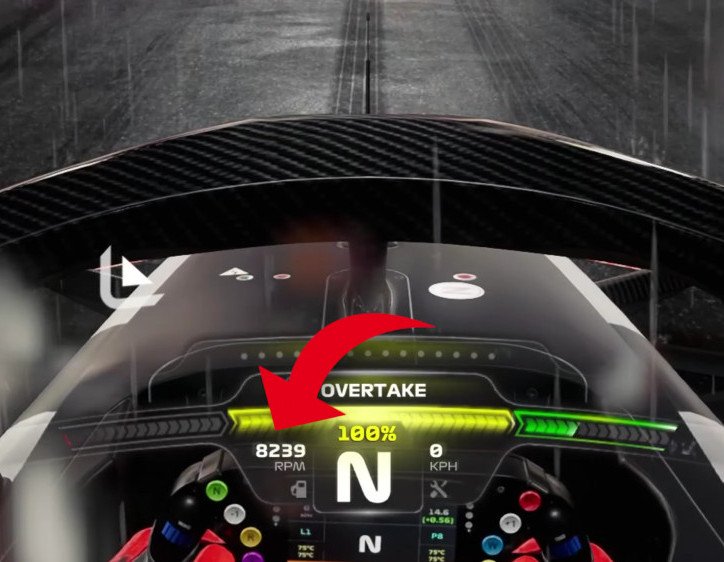 car is parked within the purple section of your grid slot (0.5m or closer), and as you get ready to go, the RPM (Rotations Per Minute) should be roughly between 8,000 – 8,500.
car is parked within the purple section of your grid slot (0.5m or closer), and as you get ready to go, the RPM (Rotations Per Minute) should be roughly between 8,000 – 8,500.
Anything above 9,000 RPM, and you’ll have significant wheelspin off the line in dry conditions.
As for your throttle control, make sure you’re using just enough to get within the range listed above for the best grip, and then, as the five lights are out, you want to smoothly apply more throttle until you get to roughly 60 – 70%.
You should have enough grip to stomp on the throttle and get going by then.
In wet conditions, you’ll want to be more patient with that last step; keep smoothly applying throttle until you have confidence in the amount of grip the tyres give you, and then go full beans.
How to Tackle The First Lap
The first lap overall in a tight field can help shape the end result of the race. So, how you decide to tackle this seemingly minor (but massively important lap), here is what I tend to think about on the first laps from the start to around lap 3ish.
When heading down into turn 1…
If you’re in the LEAD, brake a little later than you’re normal point, as you won’t be carrying as much speed as you normally would.
If you’re MID-PACK, brake at your normal braking point, watch for any people braking too late, and capitalise on them going wide.
Lastly, brake a little earlier than your typical braking spot if you’re starting towards the BACK OF THE PACK.
This sounds counter-intuitive; however, most T1 incidents happen in the middle of the pack, so braking early will give you more time to pinpoint those incidents and move out of the way, gaining many positions.
Understand What Moves to (& NOT to) Go for…
Lap 1 will be full of opportunities to overtake people. However, there is an art to understanding what moves to go for and what moves not to go for (as there are bad moves in these situations).
An example of a bad move on lap 1 would be overtaking a driver starting on softs when you’re on hard tyres. All this does 9 times out of 10, cause a battle between the two of you, resulting in lost time to the guys ahead.
DRS in Formula 1 is crucial, especially when regarding the sim.
An example of a beneficial move on lap 1 would be if you find yourself in a situation where you can become the lead driver on a certain tyre compound.
The guys ahead will likely build a gap to you regardless in the coming laps, so being the lead driver on the mediums instead of the softs would give you clean air for the laps to come.
Pick your battles to ensure you have the best track position and strategy for the middle part of the Grand Prix.
How to Recover From a Lap 1 Incident
Okay, so what if you managed to do everything I’ve mentioned in this article and still find yourself in an incident on lap 1?
Because it WILL happen at some point, with 20 drivers on the field, sometimes you will find yourself in incidents that had nothing to do with you.
If you started on the SOFTS, then for most 50% races, you will want to do a medium/medium strategy as this will give you the best longevity mixed with raw pace. If you’re in this situation in a full race distance, then it will be best to stick on a fresh pair of hard tyres and play the long game.
That will give you the option to adapt to any situation.
For those starting on MEDIUMS, this is probably the worst situation to be in during a 50% race, and the only real option you’ll have is to go on the hard compounds and see if you can make it to the end (or as long as the tyres will go).
In a 100% race, you’ll once again find yourself shifting to the hards to gain the ability to adapt throughout the race.
Lastly, if you’re on the HARDS at the start, similarly to the softs, it’s best to move to a medium/medium strategy for 50% races. However, you’re already on the hards in a 100% race, meaning you’ll need to copy the same strategy as you would in a 50% race and go medium/medium.
A luckily-timed safety car could allow you to return to the original strategy.
And, That’s It!
And that’s how you get the best start on F1 23. I hope that you now understand why race starts are crucial for getting a good result AND how to get the best start possible to ensure a good race.
If you have any extra questions, I am always available to help via the comments or privately (at anthony@virtualgpracing.com), so feel free to use any of those to get in touch.
Get out there and start winning races!

